Len was the driver and Wendy the navigator so we could just enjoy the trip today. We set off first for Flatford Mill, Constable Country. British Heritage has a carpark here and is in the process of reinstating an information centre. There was an old cottage that was once the home of a worker, then a tea room and now has displays of Constable's works. It had an extremely low ceiling – I had to duck at the main door and a tall visitor had to stoop the whole time. We had a nice morning tea at the tea rooms.
We just walked around the area and looked at the sort of scenes he painted
. There were ducks on the ponds, row boats on the river and many of the buildings still exist although some are now privately owned. The mill was owned by his father who was a wealthy merchant.
We stopped at the East Bergholt St Mary’s Church, in part because I was intrigued by what I first thought was a modern clock. When we went inside we found that is had a memorial window to Constable and that the family tomb was here although John Constable was not buried here. There was also a WW1 memorial inside with a bronze showing St George and the Dragon. On one side was an inscription to a respected schoolmaster who was in the area for 11 years and then unfortunately shot. There was a Latin inscription that translates to 'He profited and pleased, mixed business with pleasure, to his pupils a terror and a delight’ which seems rather an odd quote.
I asked a man in the church about the clock to be told it was old, a sundial and the age was uncertain
. He then told us a lot about the church’s history. The oldest parts date to 1350 but most of it was built with money contributed by the Earl of Oxford and Cardinal Wolsey in the 16th century and Henry the Eighth was keen to see it built. He pointed out that some of the exterior had lovely flint but the rest was rather roughly built – the fancy part being from the Earl and Cardinal and the other from local parishioners. The church for many years had the local dignitaries’ sitting on one side but this was changing. The door was over 500 years old with a Latin inscription.
He said the sculptures that had been outside the church had been ground up and the pieces used to form the paths at the time of the suppression of the catholic church. During Puritan times the ornamentation was stripped from the church interior and hidden so the building remained safe. He also talked about the history of witches and ducking stools in the area.
Outside the bells were in a ‘cage’ on the ground
. When Cardinal Wolsey died in 1530 money for a tower was no longer available so they were put into a bell cage and are rung from here. There was a notice saying that one day they were rung by an all woman team to celebrate the marriage of the youngest woman bell ringer in the team.
We drove through Woodbridge and saw the house that Len and Wendy have bought but they are altering it so will not move in for a few months. It seemed a very nice town with all the facilities you would need without being too big.
We then drove to Dunwich by which time it was raining steadily. We saw a lot of the heath and also the 13th century walls of Greyfriars Priory as we drive into the village. Wendy sensibly stayed in the car, Len and I stood on the stony beach under umbrellas and John went and put a finger in the water. We ate our very nice fish and chips inside – the nicest we have had in the UK so being by the beach seems to make a big difference
. The place was very busy even at 2.30pm.
Len had told us about Dunwich as we drove and we weren’t surprised to see that the cliffs were quite dangerous. We went into the museum and this gave us more details. This village now has 120 residents. In the 7th century it was the home of the powerful East Anglian kings and in the 13th century was the 6th most important town in England. It had a major port and traded with places as far away as Venice, Hamburg, Iceland and Scandinavia. Then in 1286 the crumbling cliffs blocked the port and it never recovered. The cliffs eroded at 1m per year so the towns 12 churches all fell into the sea over the years. They had a big map of the town as it had been with the present shoreline marked. Well over 2/3 of the town has gone.
The village was also a "Rotten Borough" in the past because it had been allowed 2 MP’s in its heyday and this was retained even when the there were only 100 residents and 12 voters
. The museum also detailed the smuggling history in the area. In the 12th century a Royal charter allowed the town to own any wreckage on the shores so this of course encouraged locals to create wrecks. There was a big display about the shoreline and also about the heath. John was intrigued by one display of old money and the explanation that a penny could be cut into 4 quarters or farthings (‘four things’).
We then parked near the rather posh seaside town of Aldeburgh. We walked along the shoreline and saw the old guildhall which is now a museum. On the front was a sundial dated 1684 and it was so like the one we had seen in the morning that it had to be much the same age. As we went around the town we saw lots of modern replica sun dials. We came back down the High Street and into an excellent second hand bookshop. Then we came back via the controversial sculpture of shells on the beach that commemorates Benjamin Brittan. I liked it in part because there were children playing on it as we took the photos
.
Our final activity for the day was to attend a Proms show at Snape Maltings where Benjamin Britten had set up a music school. Len and Wendy were going to 5 concerts in the season and had also got tickets for us for this show. It was a Flanders and Swan concert, the ‘hippopotamus song’ people. I can’t remember who the actual performers were but they were very good. The pianist was also the fall guy and the main singer the comic who did all the verbal links. He had us all singing various choruses (especially ‘Mud, Mud, Glorious Mud’) as well as laughing at his jokes and also his expressive face.
Three encores meant a late finish before the 1 hour drive back. It was good to look out and see the stars.
A Constable landscape
Wednesday, August 04, 2010
 Chelmsford, England, United Kingdom
Chelmsford, England, United Kingdom
Other Entries
-
61Living by the canal
Jul 1817 days prior Schoorldam, Netherlandsphoto_camera26videocam 0comment 0
Schoorldam, Netherlandsphoto_camera26videocam 0comment 0 -
62Driving in the North Sea?
Jul 1916 days prior Bremen, Germanyphoto_camera9videocam 0comment 2
Bremen, Germanyphoto_camera9videocam 0comment 2 -
63Discovering Bremen with Peter
Jul 2015 days prior Bremen, Germanyphoto_camera27videocam 0comment 1
Bremen, Germanyphoto_camera27videocam 0comment 1 -
64Checking out Hamburg
Jul 2114 days prior Bremen, Germanyphoto_camera18videocam 0comment 0
Bremen, Germanyphoto_camera18videocam 0comment 0 -
65A trying day to Trier
Jul 2213 days prior Trier, Germanyphoto_camera3videocam 0comment 0
Trier, Germanyphoto_camera3videocam 0comment 0 -
66The Chartres Illuminations
Jul 2312 days prior Chartres, Francephoto_camera16videocam 0comment 0
Chartres, Francephoto_camera16videocam 0comment 0 -
67Arriving in Paris
Jul 2411 days prior Paris, Francephoto_camera6videocam 0comment 0
Paris, Francephoto_camera6videocam 0comment 0 -
68Our Tour de Paris
Jul 2510 days prior Paris, Francephoto_camera17videocam 0comment 1
Paris, Francephoto_camera17videocam 0comment 1 -
69One evening in Paris
Jul 269 days prior Paris, Francephoto_camera12videocam 0comment 0
Paris, Francephoto_camera12videocam 0comment 0 -
70Arriving 'home' in London
Jul 278 days prior London, United Kingdomphoto_camera1videocam 0comment 0
London, United Kingdomphoto_camera1videocam 0comment 0 -
71The geocaching geeks of Gunnersbury
Jul 287 days prior London, United Kingdomphoto_camera8videocam 0comment 0
London, United Kingdomphoto_camera8videocam 0comment 0 -
72Goin' to the pikshers and kulture and stuff
Jul 296 days prior London, United Kingdomphoto_camera9videocam 0comment 0
London, United Kingdomphoto_camera9videocam 0comment 0 -
73'Oranges and Lemons...'
Jul 305 days prior London, United Kingdomphoto_camera9videocam 0comment 2
London, United Kingdomphoto_camera9videocam 0comment 2 -
74Locks and castles
Jul 314 days prior London, United Kingdomphoto_camera15videocam 0comment 0
London, United Kingdomphoto_camera15videocam 0comment 0 -
75North to Chelmsford
Aug 013 days prior Chelmsford, United Kingdomphoto_camera5videocam 0comment 0
Chelmsford, United Kingdomphoto_camera5videocam 0comment 0 -
76'Sarf End'
Aug 022 days prior Chelmsford, United Kingdomphoto_camera17videocam 0comment 0
Chelmsford, United Kingdomphoto_camera17videocam 0comment 0 -
77"Twinkle, twinkle, little star'
Aug 031 day prior Chelmsford, United Kingdomphoto_camera19videocam 0comment 1
Chelmsford, United Kingdomphoto_camera19videocam 0comment 1 -
78A Constable landscape
Aug 04 Chelmsford, United Kingdomphoto_camera15videocam 0comment 2
Chelmsford, United Kingdomphoto_camera15videocam 0comment 2 -
79Off to the Wash
Aug 051 day later Dersingham, United Kingdomphoto_camera12videocam 0comment 0
Dersingham, United Kingdomphoto_camera12videocam 0comment 0 -
80Blickling Hall
Aug 062 days later Dersingham, United Kingdomphoto_camera18videocam 0comment 0
Dersingham, United Kingdomphoto_camera18videocam 0comment 0 -
81A quick visit to Liz's place
Aug 073 days later Dersingham, United Kingdomphoto_camera17videocam 0comment 0
Dersingham, United Kingdomphoto_camera17videocam 0comment 0 -
82Kings and castles
Aug 084 days later Dersingham, United Kingdomphoto_camera14videocam 0comment 0
Dersingham, United Kingdomphoto_camera14videocam 0comment 0 -
83Beautiful Whitby
Aug 095 days later Whitby, United Kingdomphoto_camera23videocam 0comment 1
Whitby, United Kingdomphoto_camera23videocam 0comment 1 -
84On the prowl at Whitby
Aug 106 days later Whitby, United Kingdomphoto_camera13videocam 0comment 0
Whitby, United Kingdomphoto_camera13videocam 0comment 0 -
85Rob Roy territory
Aug 117 days later Lochearnhead, United Kingdomphoto_camera11videocam 0comment 0
Lochearnhead, United Kingdomphoto_camera11videocam 0comment 0 -
86'By yon bonnie banks'
Aug 128 days later Inverness, United Kingdomphoto_camera17videocam 0comment 0
Inverness, United Kingdomphoto_camera17videocam 0comment 0 -
87To the top at John O'Groat's
Aug 139 days later Inverness, United Kingdomphoto_camera13videocam 0comment 0
Inverness, United Kingdomphoto_camera13videocam 0comment 0 -
88Dawdling down to Dumfries
Aug 1410 days later Dumfries, United Kingdomphoto_camera14videocam 0comment 0
Dumfries, United Kingdomphoto_camera14videocam 0comment 0 -
89A visit to wee Robbie
Aug 1511 days later Dumfries, United Kingdomphoto_camera22videocam 0comment 0
Dumfries, United Kingdomphoto_camera22videocam 0comment 0 -
90Off to see cookie bear
Aug 1612 days later Shrewsbury, United Kingdomphoto_camera8videocam 0comment 0
Shrewsbury, United Kingdomphoto_camera8videocam 0comment 0 -
91Hanging out with Sabrina
Aug 1713 days later Shrewsbury, United Kingdomphoto_camera20videocam 0comment 0
Shrewsbury, United Kingdomphoto_camera20videocam 0comment 0 -
92Welcome to Wales boyo
Aug 1814 days later Cardiff, United Kingdomphoto_camera9videocam 0comment 0
Cardiff, United Kingdomphoto_camera9videocam 0comment 0 -
93Wales in the wet
Aug 1915 days later Cardiff, United Kingdomphoto_camera5videocam 0comment 1
Cardiff, United Kingdomphoto_camera5videocam 0comment 1 -
94Cardiff Castle to Barnhill Cottage
Aug 2016 days later Brampford Speke, United Kingdomphoto_camera16videocam 0comment 1
Brampford Speke, United Kingdomphoto_camera16videocam 0comment 1 -
95The Black Adderrrr....
Aug 2117 days later Brampford Speke, United Kingdomphoto_camera7videocam 0comment 0
Brampford Speke, United Kingdomphoto_camera7videocam 0comment 0 -
96Visiting the rellies in Kents Caves
Aug 2218 days later Brampford Speke, United Kingdomphoto_camera12videocam 0comment 0
Brampford Speke, United Kingdomphoto_camera12videocam 0comment 0
Comments
2025-05-22
Comment code: Ask author if the code is blank

 Chelmsford, England, United Kingdom
Chelmsford, England, United Kingdom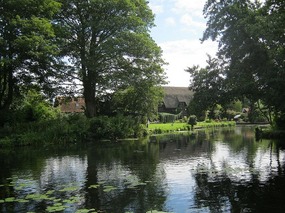
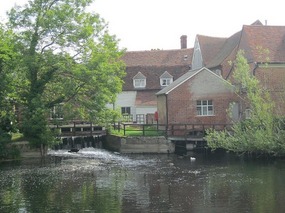
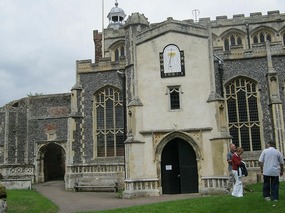
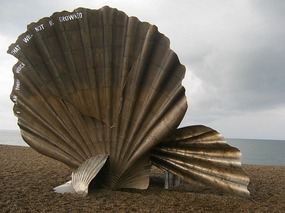
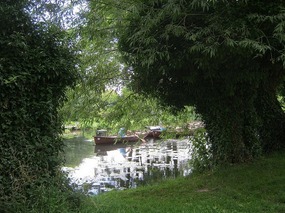
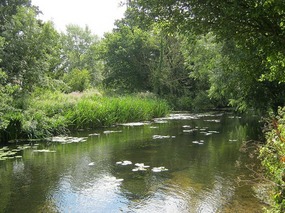




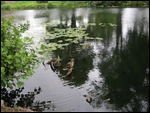
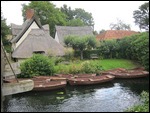
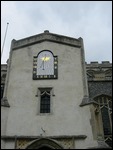
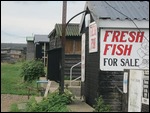
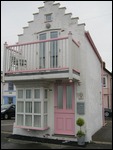
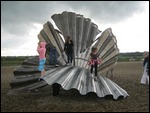
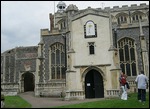

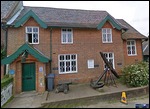
Phil & Anna
2010-08-12
Phil is soooo jealous!
He knows all the words to all the songs. Was it the songs from "At the drop of a hat" or "At the drop of another hat" or just a mixture??
baumyj
2010-08-12
We don't know the answer to this. Philip may know the "I'm a Gnu" song and the "Sloth"' song. There was also a "Rhinocerous' song and one about why "England is soooo great" + so many more..... The main performer was so expressive he looked like a bloody gnu and a sloth. Great show!!